

Queen's Park Savannah
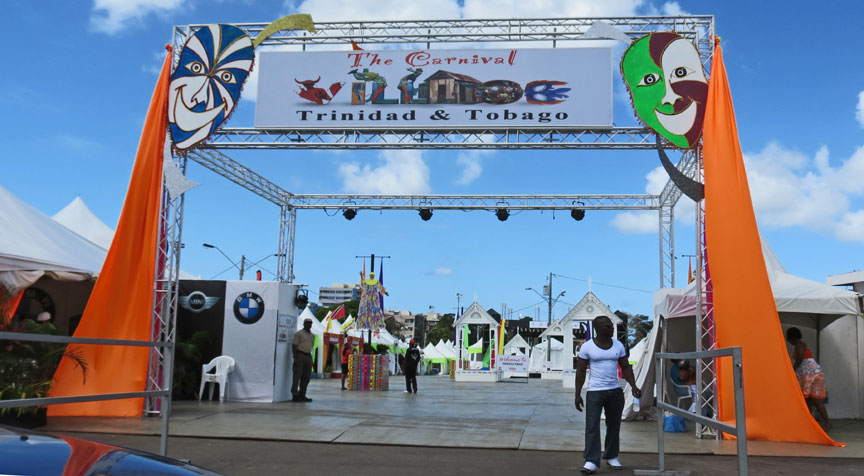
site of the 2012 Carnival
Port of Spain's largest open space—and one of the world's largest traffic roundabouts—is the Queen's Park Savannah, known colloquially simply as "the Savannah". It occupies about 260 acres (105 ha) of level land, and the distance around the perimeter is about 2.2 miles (3.5 km). Once sugar land, it was bought by the town council in 1817 from the Peschier family (except for a small parcel near its centre that served as the Peschier cemetery, which remains in private hands).
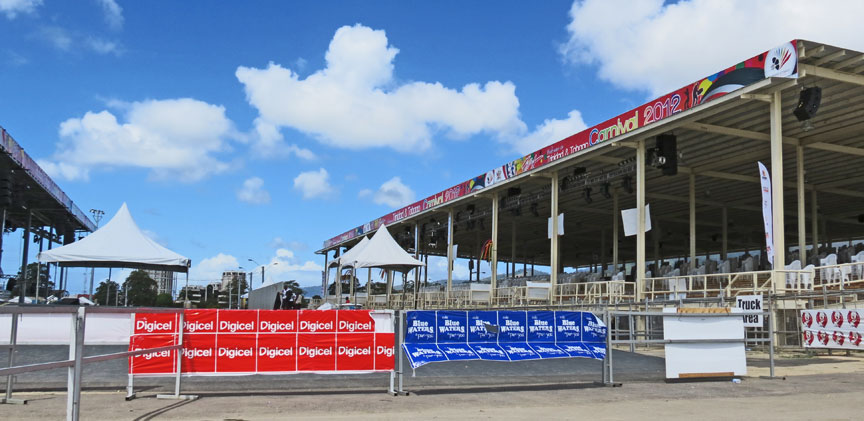
temporary stands erected on the Savannah for the Carnival
At first it was used as a vast cattle pasture in what was then the town's suburbs, but by the middle of the 19th century it had become established as a park. Until the early 1990s, horse racing was held frequently at the Savannah race track, and it also contains several cricket, football and rugby pitches. Apart from a ring of trees round its perimeter, the Savannah was never really landscaped, except for the small area in its northwest corner called the Hollows, a former reservoir now drained and planted with flowering shrubs.
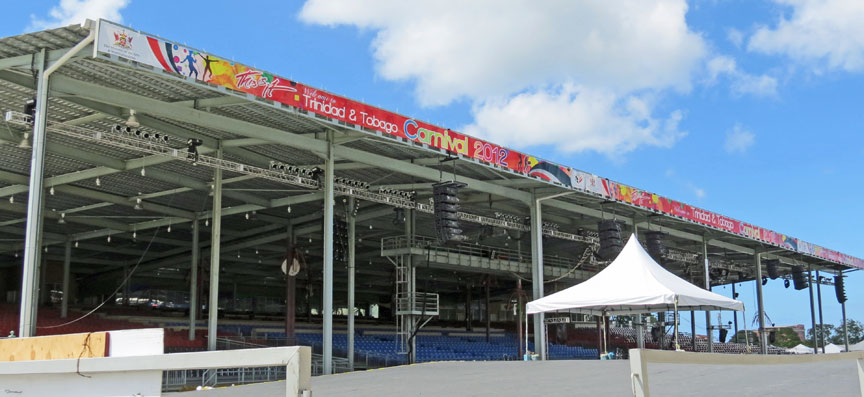
In 1999, Eden Shand documented the social history of the Savannah thus:
".....Today, six acres of the Savannah greens are being threatened by those who
have neither taste nor a sense of history. But those acres are not yet lost. If
the Savannah Saviours have their way, the rolled pitrun that has violated the
sacred ground would be dug up ad the acreage regrassed. That would put paid to,
not only the loss of six acres, but future attempts to alter the basic character
of the Savannah."
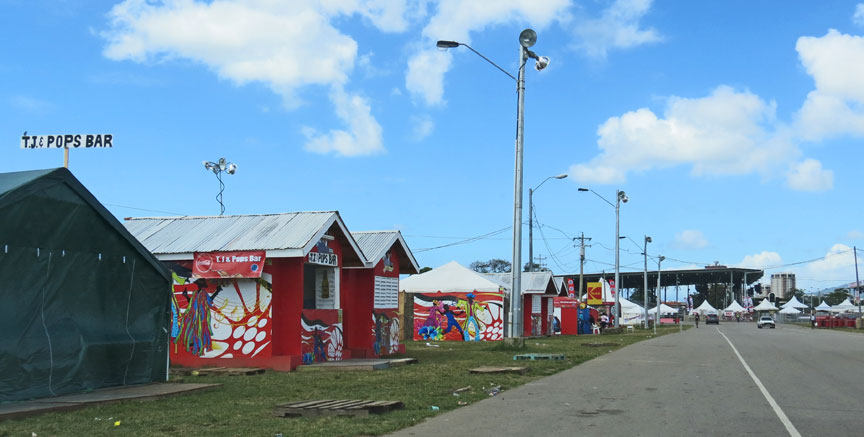
In earlier times, however, 33 acres did get lost and, thanks to the painstaking
historical research of Fr De Verteuil of St Mary's College, this story can now
be told.
The story begins, not with the sale of the Savannah to the Cabildo, the City
council of the day, but with the arrival in Trinidad of Henri Peschier, a French
plantocrat resident in Grenada.
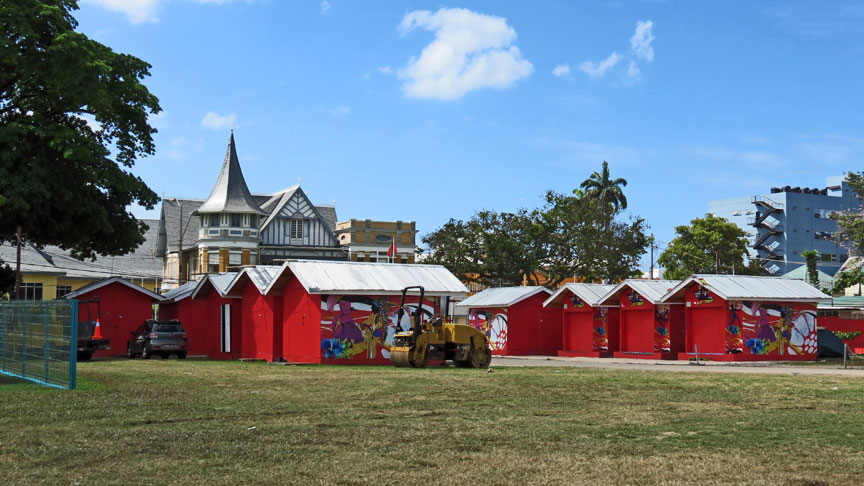
Attracted by generous terms offered to Catholics by the Spanish government to
settle in Trinidad, Henri Peschier, his wife, children, mother-in-law and eight
slaves arrived here in 1781.
He immediately sent in an application to the Spanish Governor, Martin de
Salaverria, for a grant of land. The following year he was granted 179 acres,
which is today the southern portion of the Savannah, that became the Paradise
Estate where he grew sugar cane.
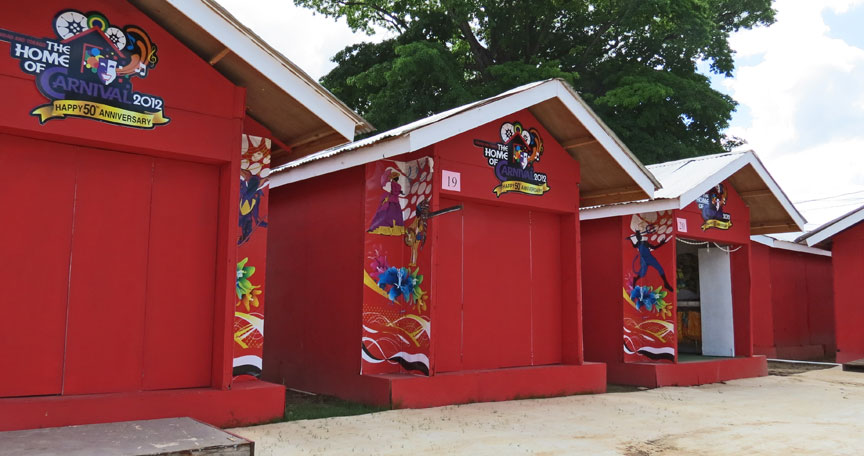
Carnival stands for venders
That same year, Henri's mother-in-law, Maria Magdalena de Beltgens was granted
53 acres immediately to the north of his grant, what is today the northern
portion of the Savannah.
So between Henri and his mother-in-law, the Savannah of the Peschiers comprised
232 acres. If the Peschier property was conveyed to the Cabildo, how come the
Savannah of today is only 199 acres. Where did 33 acres go? The disappearance
has to do with the conveyance of the acreage of Maria Magdalena de Beltgens.

Maria Magdalena de Beltgens had been granted a further ten acres north of the
present Savannah. There she built her Great House just south of where the
President's House of today stands. She was not long in possession of these lands
before she died in 1791. To satisfy the terms of her will, her property was sold
to Louis de Malvault, a Royalist from Martinique, who named it La Hollandais
Estate. So what was to become the Queen's Park Savannah was really two estates,
Paradise and La Hollandais.
Curiously, Henri Peschier also died in 1791, leaving his widow to look after the
Paradise Estates. At the turn of the century sugar went into decline and the
estate became a financial liability.
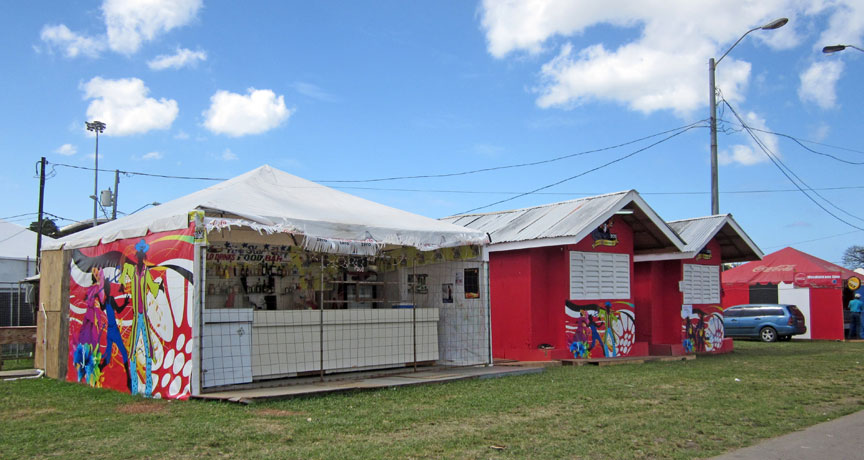
But Henri's widow, Celeste Rose Peschier, declared that as long as she was alive
there was no question of selling the estate. Her death in 1817 cleared the way
for her heirs to dispose of the property. The Cabildo, spurred on by the
Governor, Sir Ralph Woodford, made an offer of six thousand pounds for the 179
acres and this was accepted by the heirs.
The northern portion, Malvault's La Hollandais Estate, was the subject of a
separate conveyance to the Cabildo that took place in 1819. But not all of La
Hollandais was bought by the Cabildo. The northern most portion, together with
the land on which Maria de Beltgens' residence stood, was not sold until 1821,
and this to the Colonial Treasure so that Sir Ralph Woodford could convert the
de Beltgens Great House into the Governor's Residence.
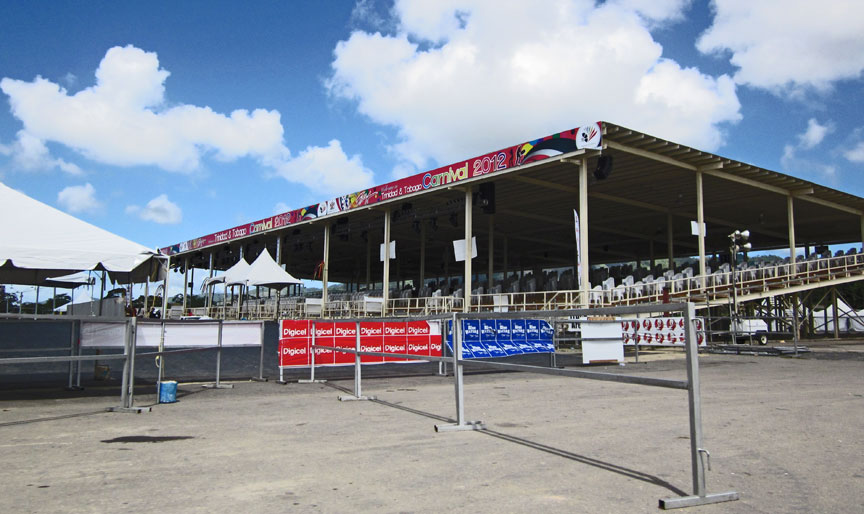
It would appear that in the dividing up of the La Hollandais Estate for the
Cabildo and for the Colonial Treasury, the Cabildo ended up with 199 acres.
These 199 acres were eventually transferred from the Cabildo to the Colonial
government in 1825 and fenced. It was officially named Queen's Park in 1845.
The Savannah remained an unpaved green expanse of Crown Land from 1821, right
through the colonial period, up to our attaining independence. And then we
independently began to degrade the Savannah just as we let Chaguaramas go to
wrack and ruin..."

Immediately north of the Savannah—also the northern limit of the city of Port of
Spain—are the Royal Botanic Gardens, the Emperor Valley Zoo, President's House
(recently abandoned after one end fell down), the official residence of the
prime minister, and Queen's Hall, the city's major performing arts venue. Lady
Chancellor Road, which ascends the hills overlooking the Savannah, is one of
Port of Spain's most exclusive residential areas and is the current home of
former West Indies cricketer and record breaking batsman, Brian Lara.

On the Savannah's southern side is the Grand Stand, formerly used for viewing
horse races, now used for various cultural events, most notably Carnival, when a
temporary North Stand and raised stage are constructed in front of the Grand
Stand, creating the "Big Yard", Carnival's central location since the early 20th
century (previously, the main viewing area for Carnival was in downtown Port of
Spain). From this location the Parade of Bands is broadcast live to the nation
on Carnival Monday and Tuesday; it is also the venue for the Calypso Monarch and
Carnival King and Queen Competitions and the finals of the Panorama steelpan
competition. The architecturally soothing arches and curves of the Port of Spain
National Academy for the Performing Arts dominate the
south boundary of the Savannah between the green trimmed landmarks of Memorial
Park (in remembrance of fallen soldiers during World Wars I and II) and the
gingerbread styled, limestone built, colourful splendour of the Knowsley
Ministry of Foreign Affairs Building.

Port of Spain National Academy for the Performing Arts
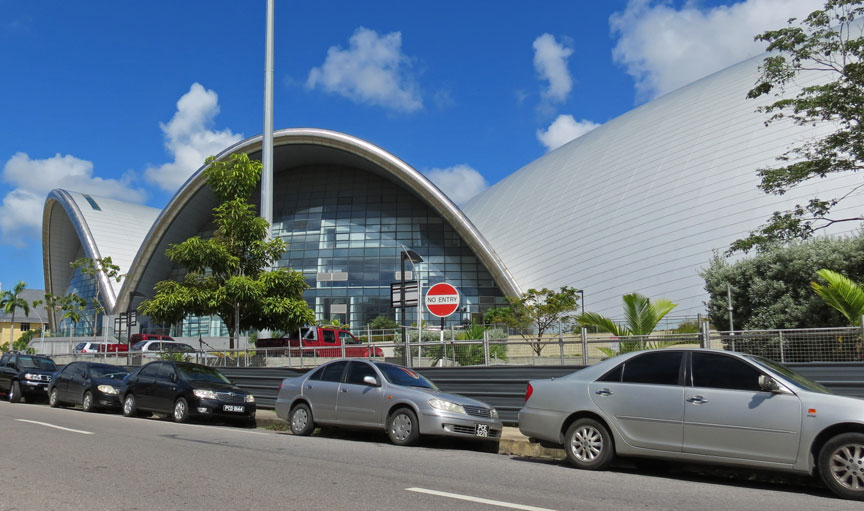
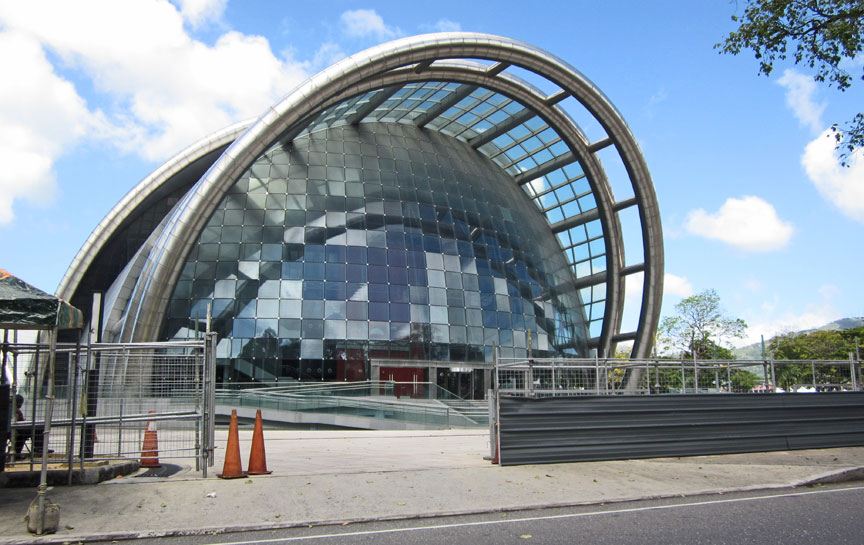
The western edge of the Savannah, along Maraval Road, is the location of the
Magnificent Seven, a group of late Victorian and Edwardian buildings built in an
eccentric and flamboyant variety of styles. These are the recently well restored
Queen's Royal College; the residences of the Anglican bishop and the Roman
Catholic archbishop; Whitehall, once a private residence, then the office of the
prime minister from 1963 to 2010 when it was abandoned because of structural
decay; Mille Fleurs, once a private residence, supposed to be undergoing full
restoration as a public museum and headquarters for the National Heritage Trust
but in fact still deteriorating to a deplorable state despite being sold to the
Government in 1979; Roomor, an ornate black-and-white chateau-like building that
remains a private residence; and Stollmeyer's Castle, a turreted house
supposedly modeled on Balmoral Castle whose restoration as a future
ambassadorial residence has also stalled.
Text from Wikipedia

Botanic Garden
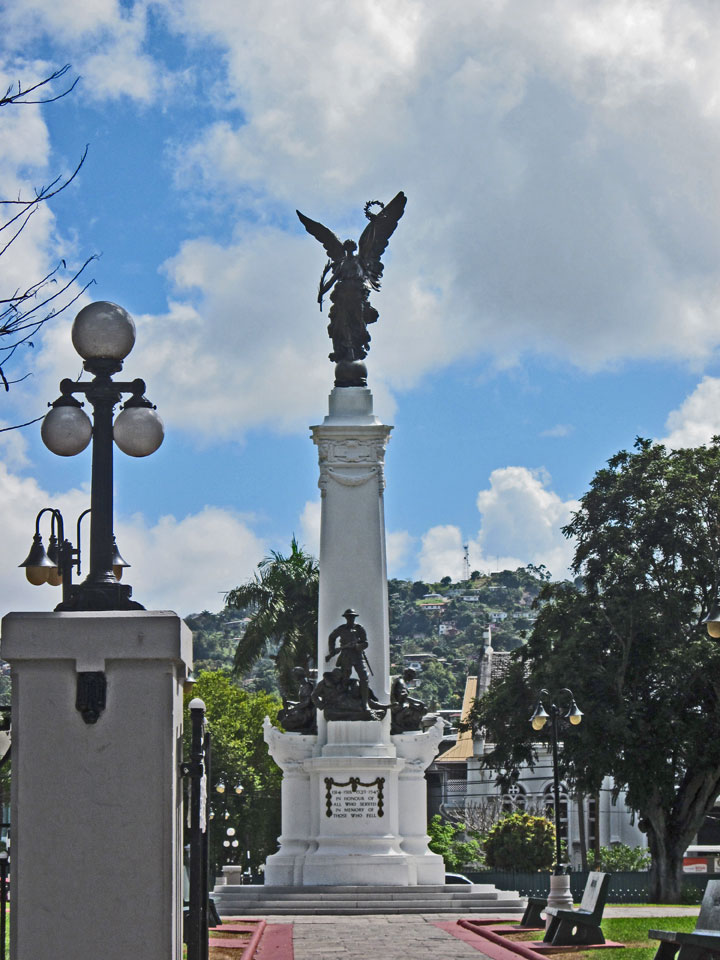
Memorial Park (in remembrance of fallen soldiers during World Wars I and II)